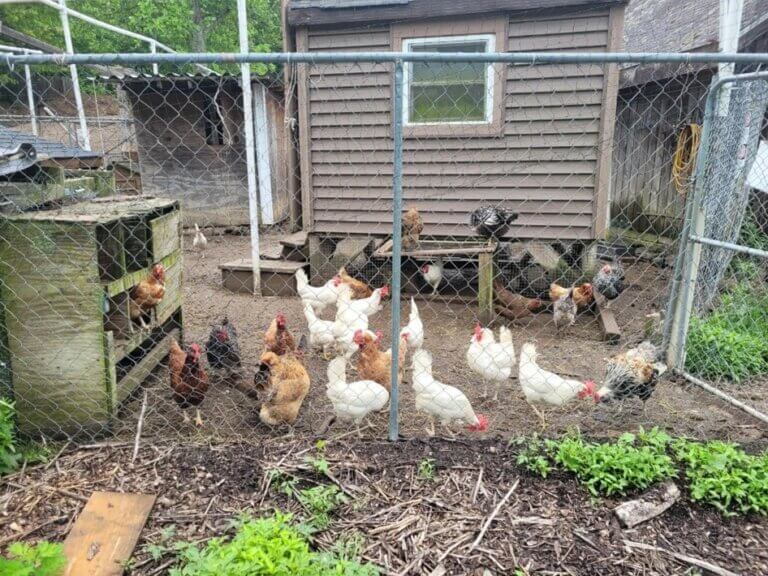This article contains sustainability considerations as municipalities navigate regulation of backyard farms as an accessory residential use.

Small-scale, backyard farming can provide residents with fresh, healthy food, supplemental income, or an enriching hobby. Connecticut’s Right to Farm Law (CGS § 19a-341) has been in place since the 1980s, protecting farms from certain nuisance-based lawsuits and in some cases preempting local zoning. Municipalities may struggle with striking a balance between allowing small-scale livestock farming on residential properties and neighbor concerns related to odor, noise, and runoff. Below are some sustainability considerations as towns navigate regulation of backyard farms containing animals.
Space, Acreage, and Setbacks. It is not uncommon for zoning regulations to limit where livestock can be kept by imposing space limitations, such as a minimum lot size or liberal setbacks. While strict limitations make sense for multiacre farms, a one-size-fits-all approach may result in overly restrictive regulations that discourage backyard farming. Carefully crafted regulations for specific animals – like Ansonia’s regulations for fancy pigeons – prevent unintentional pigeonholing of all livestock into the same category.
Managing Nuisances. Animal husbandry may create nuisances that impact other property owners, such as noise, odors, or runoff. Some of these nuisances are beyond the reach of municipal land use – for instance, per CT’s Inland Wetlands & Watercourses Act (CGS § 22a-40), most farming activities are permitted as-of-right in wetlands (though this does not mean no restrictions apply – see this CT DEEP resource for more details). Municipalities should consider setting reasonable standards for storage of manure (x feet from property lines), provisions for drainage (maximum allowable grade), or requiring that animals be fenced.
Animal Welfare. Just as zoning provides for the public safety and wellbeing of humans, regulations should also maximize animal welfare. As an example, allowing multiple horses to live on a half-acre property could lead to inhumane conditions. A best practice to ensure adequate enclosure- and lot-sizes is to designate a number of square feet/acres per animal. For instance, Bristol’s regulations for 5.4.13 Keeping of Livestock state, “A minimum lot area of 2 acres shall be required for the first animal being kept and 1/3rd acre for each additional animal.” Plymouth also uses a very unique formula with “bird units” in Section K.1.iii that is worth emulating.
Farm Stands. Allowing the sale of agricultural products, like eggs or honey, by right on residential properties empowers small-scale farmers to earn income. If municipalities are concerned about the operation becoming too commercial for a residential area, a requirement that only products created on the property are allowed for sale can act as a reasonable limitation. Municipalities may consider providing a one-pager with regulations for farmstands to interested resident.
Outreach & Education. Unfortunately, many residents only find out about zoning restrictions after they have already erected a coop or welcomed animals into their family. Widely publicize your regulations and ordinances related to backyard farming or distribute the information to community groups such as 4H clubs or school districts.
Small-scale farming on residential lots makes our communities more vibrant and sustainable. We can minimize the negative consequences by crafting thoughtful regulations that fit the needs of each community.
Further reading:
- “Zoning Regulations for Livestock: Best Practices,” by the CT Resource Conservation and Development Area
- “Planning for Agriculture: A Guide for CT Municipalities” by the American Farmland Trust and the CT Department of Agriculture
- “Connecticut’s Right to Farm Law” by the CT Farm Bureau
- “Zoning for Urban Agriculture” by the Healthy Food Policy Project
- “Forestry, Agriculture, and the CT Inland Wetlands and Watercourses Act” by CT Department of Energy and Environmental Protection
Contact Us
The “Sustainability Spotlight” provides readers with ideas on how to incorporate sustainability into your land use regulations. Questions? Contact Christine O’Neill.


